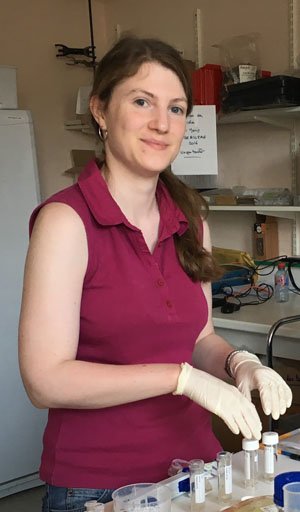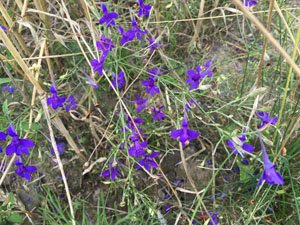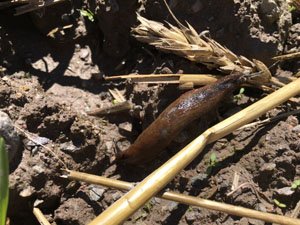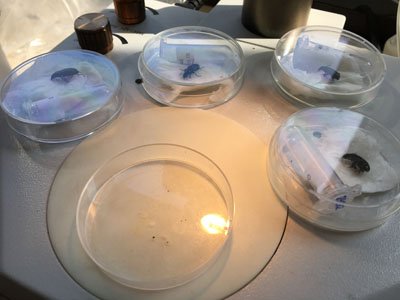
Yasemin Günay is a PhD-candidate in the working group Applied and Trophic Ecology headed by Michael Traugott, working on a FWF-project by Corinna Wallinger (Austrian Academy of Sciences - ÖAW). The research of this group is based on analysing food web interactions and associated ecosystem services such as pest control. By using molecular methods to detect consumed food DNA, especially diets of difficult observable animals, like invertebrates, can be studied. For evaluating ecosystem services like pest control or weed seed predation, it is necessary to understand trophic interactions between species.
Within this project, the role of carabid beetles as seed and slug predators in agroecosystems is studied, hoping to use them as beneficial organisms and reduce pesticides. Carabid beetles are an abundant and diverse group in arable land across Europe. They are known to feed on animal prey, like aphids, springtails, earthworms and slugs, but also on weed seeds. To which extent carabids play a key role in regulating weed seeds needs to be further analysed as most findings are based on laboratory feeding experiments or correlative analysis. However, these results do not necessarily represent the situation in field. In contrast to feeding experiments, field habitats offer a greater food choice which can lead to switches between prey types. This makes it difficult to define the trophic functional groups of the different carabid species.
In 2016, carabid beetles were collected in organic wheat fields in three different regions in France and Austria during two collection periods, in May/June and July/August. The gut content of the carabids were obtained by taking advantage of their natural behavior to regurgitate under stress situations. For every individual, the regurgitate was received in the laboratory and the carabids then released back into their habitat. After DNA extraction of the regurgitates from the most frequent carabid species, molecular analyses were conducted to test for DNA fragments of aphids, springtails, earthworms and weed seeds. Using a next generation sequencing (NGS) metabarcoding approach, samples positively tested for plants were further analysed to gain information about the consumed weed seed taxa.


Results of the molecular analyses should help to understand (1) whether there are any consistent patterns of prey consumption with robust trophic-functional groupings of carabids and prey, across a range of environmental and agricultural conditions in wheat fields and (2) whether carabids switch between weed seed and slug predation and, if so, which factors drive the change.
Archive - Meet an Ecology PhD articles

